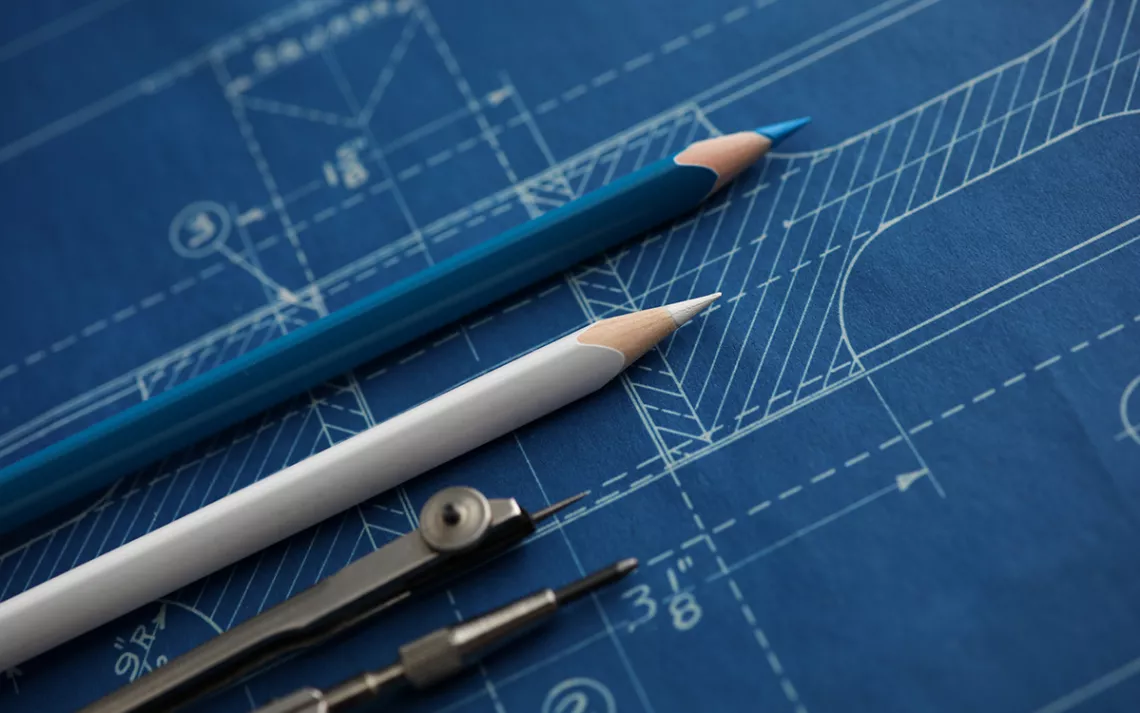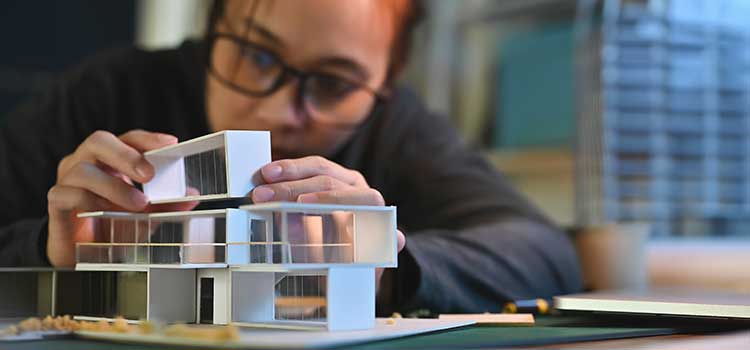Architect Workflow Optimization for Faster Project Delivery
Architect Workflow Optimization for Faster Project Delivery
Blog Article
Comprehending the Diverse Occupation Paths Available for Aspiring Architect
As a hopeful Architect, you have a globe of career paths waiting for you. Whether you're attracted to conventional design or the nuances of lasting style, there's a niche that aligns with your passions.
Conventional Architecture: Creating Buildings and Frameworks
Conventional architecture concentrates on designing structures and structures that mix capability with aesthetic appeal. As you explore this field, you'll value the elaborate balance in between form and objective. You'll find out to attract motivation from historical styles, integrating elements like proportion, products, and craftsmanship. Your designs can show social heritage, showcasing regional practices while fulfilling contemporary demands.
You'll create abilities in composing, model-making, and website analysis, permitting you to envision and connect your concepts properly. Involving with clients, you'll require to understand their vision and convert it into possible layouts.
In addition, building codes and sustainability techniques are necessary in your work, ensuring your structures are ecologically pleasant and secure. As you grow in your occupation, you'll discover chances in property, industrial, and even remediation jobs, each offering distinct obstacles. Accepting conventional architecture leads the way for a fulfilling profession that admires the past while forming the future.
Urban Planning: Forming Communities and Public Spaces
As an ambitious Architect, you can play a necessary role as a city planner, changing just how neighborhoods work and interact. By using neighborhood engagement approaches, you'll assure that locals have a voice fit their setting. Plus, incorporating lasting style principles will help develop rooms that not only meet today's requirements yet additionally safeguard the future.
Role of Urban Planners
While many could consider architects as the single dreamers behind buildings, urban planners play an important function in forming the wider landscape of areas and public spaces. They assess land usage, zoning regulations, and neighborhood needs to create sustainable environments that improve quality of life. By working together with numerous stakeholders, you'll aid develop parks, transportation systems, and houses that promote social communication and ease of access. Urban coordinators additionally concentrate on environmental factors to consider, ensuring that growths incorporate environment-friendly rooms and support biodiversity. Your expertise in spatial design and area characteristics enables you to visualize future development while maintaining social heritage. In this critical function, you'll straight influence how individuals experience their environments, making every job a chance for positive adjustment.
Area Engagement Approaches
Efficient area interaction methods are crucial for city planners to guarantee that the voices of locals are listened to and valued in the preparation process. To cultivate meaningful dialogue, you should prioritize open discussion forums and workshops where area participants can reveal their concepts and worries. By proactively integrating and paying attention feedback, you'll develop spaces that mirror the community's requirements, ultimately leading to even more lasting and effective city environments.
Sustainable Design Concepts
When designing urban spaces, including sustainable style principles is vital for producing environments that grow both ecologically and socially. Take into consideration integrating environment-friendly areas, like parks and gardens, to boost biodiversity and enhance air quality.
Designing with water preservation in mind is likewise crucial-- believe regarding rain gardens and absorptive surface areas to manage stormwater. Including area participants during the planning process guarantees that the areas you create satisfy their requirements and urge social interaction. By embracing these principles, you'll contribute to vibrant, lasting urban landscapes that benefit every person.

Landscape Style: Developing Sustainable Outside Environments
As you discover landscape architecture, you'll find necessary design concepts that develop practical and stunning outdoor rooms. Sustainable techniques play an important role in making certain these atmospheres thrive while decreasing ecological impact. Plus, you'll find a range of occupation possibilities that allow you to make a genuine distinction in how individuals interact with nature.
Design Principles in Landscape
Recognizing layout concepts in landscape style is important for developing sustainable outside settings that balance with nature. You'll need to ponder elements like equilibrium, proportion, and scale to ensure your layouts feel natural and welcoming. Including native plants not just enhances biodiversity yet additionally minimizes water use, making your landscape resilient. Think of the circulation of space and exactly how individuals communicate with it; paths and seating areas ought to welcome exploration and relaxation. Additionally, focus on seasonal changes, making with materials that complement the environments year-round (Architect). By focusing on sustainability and visual appeals, you can create outdoor spaces that enrich the area and advertise well-being. Accepting these concepts will establish a solid structure for your career in landscape style.
Sustainable Practices Overview
Lasting methods in landscape style not only focus on aesthetics but additionally focus on ecological health and source preservation. By incorporating indigenous plants, you enhance biodiversity and decrease the requirement for chemical plant foods and pesticides. Carrying out reliable watering systems aids conserve water and lessens overflow, shielding neighboring communities. You can create areas that advertise soil health and wellness, such as exercising and using natural products permaculture concepts. In addition, incorporating environment-friendly facilities, like rain gardens and porous pavements, top article help in stormwater monitoring and lowers urban warm. When you produce exterior environments with sustainability in mind, you add to a healthier world and supply rooms that cultivate community link. Eventually, these techniques ensure your designs benefit both people and the setting for several years to come.
Profession Opportunities Expedition
With a solid structure in lasting techniques, landscape style uses a variety of job courses that enable you to make a meaningful effect on the setting. Urban planners often collaborate with landscape engineers to develop green rooms in urban settings, improving city livability. If you're enthusiastic concerning education and learning, think about ending up being a landscape style teacher, motivating future generations.
Sustainable Style: Concentrating On Eco-Friendly Practices
As you explore your occupation in design, embracing environmentally friendly techniques can establish you apart in an affordable area. Lasting style focuses on creating buildings that reduce environmental influence while enhancing passenger health. By including eco-friendly products, energy-efficient systems, and lasting building methods, you'll add to a greener future.
Begin by obtaining understanding of green certifications like LEED or BREEAM, which can boost your qualifications. Take into consideration how all-natural light, ventilation, and thermal efficiency can enhance style. Collaborate with designers and environmental specialists to introduce options that decrease waste and save resources.
Don't forget the significance of area involvement-- interesting local stakeholders can influence layouts that harmonize with the setting. As clients increasingly focus on sustainability, your experience in green methods will not only bring in jobs yet likewise accomplish your interest for responsible architecture. Accept this essential facet of the occupation, and view your job thrive.
Historic Conservation: Shielding and Restoring Cultural Heritage
While you begin on your architectural journey, take into consideration the essential function of historic preservation in preserving our cultural heritage. This area concentrates on the security and remediation of considerable buildings, sites, and structures that tell the stories site here of our past. By participating in historical conservation, you'll help protect the architectural legacy that shapes neighborhood identification.
As a historic conservation Architect, you'll evaluate historical significance and analyze the problem of frameworks. You'll work very closely with preservationists and chroniclers to assure genuine repair methods are employed. This job path enables you to mix imagination with research study, allowing you to create remedies that value initial products and workmanship.
Your job not just adds to sustainability by reusing existing structures but likewise fosters a sense of pride within neighborhoods. Welcoming this course will certainly help you come to be a guardian of background, maintaining the stories and visual appeals that improve our lives.
Inside Design: Enhancing Indoor Spaces
Historical preservation and interior style both share a commitment to improving the built setting, but they focus on different aspects. While historical conservation stresses preserving a structure's historical and social worth, indoor architecture zeroes in on maximizing interior rooms for capability and appearances.
As an aspiring Architect, you'll discover that indoor design enables you to blend creative thinking with technical skills. You'll make spaces that not only look good however additionally advertise convenience and efficiency. This area includes comprehending exactly how light, shade, and products connect within an area, influencing state of mind and functionality.
You'll work on numerous tasks, from domestic homes to commercial workplaces, ensuring that each setting satisfies the demands of its owners. By focusing on customer experience, you can transform interiors right into inspiring and useful spaces, making a significant effect on how people interact with their surroundings. Welcome the chance to boost interior atmospheres and shape the way people live and function.
Industrial Design: Merging Performance With Aesthetic Appeals
Industrial layout plays a necessary role in developing items that perfectly blend aesthetic appeals with performance, making sure that what you utilize daily is not only visually appealing but also functional. As a hopeful Architect, you could engage on your own in this field, focusing on developing every little thing from furniture to consumer electronic devices. Your work includes understanding customer needs, materials, and making processes, allowing you to produce innovative remedies that improve day-to-day experiences.
In commercial design, you'll commonly work together with makers, marketing experts, and designers, guaranteeing that your designs are not only beautiful yet additionally feasible. This occupation path uses a dynamic environment where imagination satisfies functionality, making it a rewarding selection for architects interested in forming the items of tomorrow.
Often Asked Questions
What Educational Credentials Do I Need to Come To Be an Engineer?
To come to be an engineer, you'll need a professional degree in design, usually a Bachelor's or Master's. In addition, you'll have to finish an internship and pass the Architect Registration Assessment to exercise legitimately.
Exist Accreditation Needs for Various Building Job Paths?
Yes, there're qualification demands for different architectural courses. Architect. You'll require to pass examinations, complete internships, and in some cases seek specialized training, relying click resources on your picked focus, like landscape style, metropolitan design, or historic preservation
What Software Application Abilities Are Vital for Architects Today?

Exactly How Can I Gain Practical Experience While Studying Style?
You can obtain functional experience by interning at building firms, taking part in design competitors, volunteering for community projects, or collaborating with schoolmates on real-world assignments. These opportunities enhance your skills and develop valuable connections in the industry.
What Job Opportunities Exist Outdoors Standard Architecture Firms?
You can check out numerous work possibilities outside standard style companies, like city planning, interior layout, landscape architecture, building and construction administration, property advancement, and even roles in sustainability consulting. Each deals one-of-a-kind challenges and benefits.
Whether you're attracted to traditional design or the subtleties of sustainable style, there's a specific niche that aligns with your interests.When creating urban rooms, integrating lasting style concepts is critical for developing atmospheres that thrive both ecologically and socially.As you check out landscape architecture, you'll discover vital style concepts that develop attractive and functional exterior rooms.Comprehending design principles in landscape design is vital for producing sustainable outdoor settings that balance with nature.In industrial layout, you'll usually team up with manufacturers, designers, and online marketers, making certain that your designs are not just gorgeous but likewise practical.
Report this page